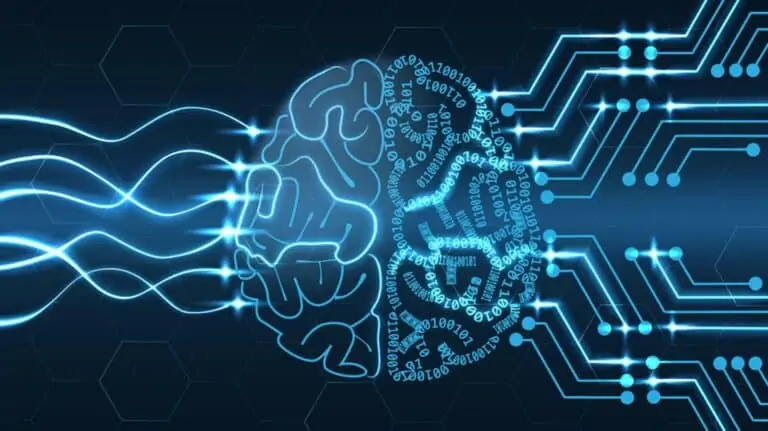There is a riddle I asked my kids when they were little. Although there are multiple variations of this riddle such as two paths, two doors, two houses, two guards, or two sisters, the idea is always the same. Finding the right path!
My version of this riddle goes like this;

“You are lost in an enchanted forest and finally, you reach a fork in the road. An old, worn-out sign explains that in one direction, you will find an escape from this forest to an eternal bliss and the other direction leads you deeper into the forest and you will be lost forever. Each path is blocked by an Ogre, who knows where that path leads to. They are brothers and one, Falgrok, always lies and the other one, Trugrok, always tells the truth. You have a chance to ask only one question, otherwise one of the ogres may beat you up to a pulp. What would you ask?”
At first, it looks like you have a 50% chance of survival or a certain death if you are a pessimist. However, there is a right question you can ask and escape from this forest.
You simply walk to an Ogre and ask, “If I ask your brother a way out of this forest, which path would he point out?” and then simply choose the opposite path.
How would that work? You choose your way out by simply knowing what is not right.
If you ask Falgrok, he knows Trugrok would have pointed out the right path, knowing this, lies about it, and sends you the wrong way. On the other hand, Trugrok knowing his brother would have lied to you, honestly pointing out the wrong way.
Trying to understand and implement Artificial Intelligence for your Supply Chain Network during your digital transformation efforts, or let alone finding the right partner in your journey is like walking in an enchanted forest full of myths, ogres, and lost souls trying to find a way out. Finding the right path in there to eternal bliss starts with knowing what is not right. Implementing AI is not a small feat and you may get bombarded with vague definitions and stories about how AI makes the world a better place!
Let’s try to look at a few common myths you may come face to face in your quest to transform your Supply Chain Network by using AI while going digital in your organization.
5 Common Myths of AI
1. AI is ML
Machine Learning is a subset of Artificial Intelligence. AI covers a wide area, which includes ML, as well as performing very complex tasks such as natural language processing, visual and speech recognition, robotics, and more. AI, in a general sense, is the ability of machines to perform these complex tasks by showcasing human-like intelligence. Artificial Intelligence requires a set of pre-defined algorithms or models to make decisions and act on different scenarios. “Machine Learning” term coined by Arthur Samuel in 1959 as a ‘field of study that gives computers the ability to learn without being explicitly programmed’.
We can define it as a way of creating algorithms and analytical models by analyzing data and employing techniques such as heuristics, pattern recognition, clustering, classification, or independent component analysis to create better algorithms over time. As these models are exposed to the onslaught of new and even continuous streams of data, computers can adapt to fine-tune these models and algorithms to produce ever more reliable and repeatable decisions. Manually, it would be downright impossible to sift through Tera or Petabytes of data every day.
2. AI is automation

AI is not just an automation. Automation is simply carrying out a pre-defined task without any manual intervention such as your alarm going off when your set time is reached. You do not need any software or electronics since automation can be done even mechanically. AI, on the other hand, is all about giving the system the capability to make intelligent decisions based on a set of pre-defined algorithms and models with a given data set. With AI, your alarm may go off at different times every day based on your schedule or your self-driving car navigates around the city without needing you to steer. Automation can be a part of an AI solution and AI may lead to an increase in overall efficiency but calling AI an automation is oversimplification. Automation by itself doesn’t contain any learning capabilities.
You may automate your sales and inventory data to flow to your planning system, or even generate simple predictions based on predefined algorithms.
However, for your entire Supply Chain network to autonomously adapt to changes in your business by finding new algorithms, setting new business rules, or updating planning parameters without any manual intervention, you need intelligence -whether artificial or not.
3. AI creates instant ROI as soon as deployed
Organizational data quality and digital transformation efforts along with aligning business processes require time. AI is not just another software deployment. Training ML or AI systems requires vast data to learn and it takes time to collect, validate, and cleanse this data. Some of these efforts may require supervision to correctly label the training datasets.
To successfully reap the benefits of Machine Learning or Artificial Intelligence for your Supply Chain operations, such as planning, forecasting, or Replenishment, input data i.e. master data should be cleaned up, made internally consistent and automation tools are implemented to identify anomalies in input data to prevent data corruption over time. Next-generation planning platforms without a need to separately purchase master data management tools can do all this and more.
Consider AI as one of the tools in the digital transformation process. To achieve a successful transformation, your entire organization along with business and IT processes should be transformed and aligned altogether. However, rather than waiting for your organization to move its limbs, you should look for next-generation planning tools, which can also assist you in cleaning your master data, making it internally consistent, and detecting anomalies in the input stream.
Also, your technology partners should have domain knowledge and subject matter expertise on your entire Supply Chain Network to implement AI, on the entire network end-to-end rather than compartmentalized or isolated fashion.
4. AI can tell you why something happens bias-free
Figuring out why something happened can be done by using diagnostic analytical techniques such as drill-down, data discovery, data mining and correlations, and business rules for exception management. AI, on the other hand, can help us make inferences but it cannot pinpoint a reason for an outcome. AI can show what is wrong and alternatives to fix it but cannot say what caused this outcome, at least not yet. AI can solve one task superbly well but as conditions change even slightly, the successful outcome rate of AI will diminish very fast. Also, it is not accurate to say it is free of bias since bias can be introduced to the system through learning. If the given learning data set is heavily biased for a specific condition, the system will not be bias-free.
In 2016, Microsoft® introduced Tay, an AI chatbot for Twitter®. I still think it was an awesome experiment, and Microsoft® claimed that the more people chat with Tay, the smarter it gets. It took only 24 hours for the chatbot to start sending racist tweets and forced Microsoft® to call it off and delete some of its nastiest tweets.
Ultimately, it comes down to the data that you feed into AI functions, and without diagnostic capabilities that will enable you why something happened, letting AI run on its own it can easily lead to undesirable results.
5. More data leads to a better result
It is not the quantity of data but the quality that counts. Cognitive AI tools can easily sift data and infer results if the system is given the proper context and the right amount of data. At this point, even simple machine learning methods such as regression can create incredible results. If the data you provide is not cleansed and contextualized, you will neither have an AI nor solve any problems.
In Today’s world, data is neither owned by a single department nor generated by a single source. If you look at the Supply Chain Networks today, it is important to collect data not only organization-wide and through cross-departments but also cross-organizations over your network as well. Implementing AI across your entire supply chain network (Source, Make, Deliver) with better quality data, will give you the full picture and better results.
If you do not have accurate and real-time data about your demand and supply, you can never fully optimize your operations such as production planning or demand-driven-replenishment over your Supply Chain network. Implementing AI only on your entire supply chain network, end-to-end, with better quality data, will give you the full picture and better results.
6. AI will replace humans
Artificial Intelligence can make some tasks much simpler and reduce some mediocre or menial jobs but that doesn’t mean we will be replaced by human-like robots soon. AI can analyze vast amounts of data or scan thousands of images in a very short time and pinpoint anomalies missed by humans.
Imagine an attorney using AI, not only to find the most relevant past court cases and verdicts out of thousands in only a few seconds but also to get advice for the best defense strategy, or a doctor accurately diagnosing a patient with an often mistaken or rare illness using AI. In both instances, AI makes the overall process much less error-prone by minimizing the time-consuming and manual processes.
However, AI cannot take away an attorney’s or a physician’s job since the final verdict from an algorithm cannot be treated as an absolute truth. AI will bring positive changes in our lives and reform the way we do things by helping us perform more value-adding work in general.
On a Supply Chain Network, you will be able to increase organizational efficiency and add value to your bottom line by reorganizing your teams to allow them to make more complex decisions such as those that require collaboration or scenario planning, rather than simple operational decisions like replenishment, fulfillment or transportation, which can be carried out autonomously by an AI-backed planning and execution system.
Yes, autonomous supply chain management supported by AI for simple and repetitive operational decisions such as replenishment, fulfillment, or transportation is already a reality. However, for complex and creative decisions requiring strategic thinking, collaboration, or scenario planning that requires exploring new ways of doing business, humans armed with advanced analytical weapons will always be needed.
Beat the Ogres…
These are not the only myths surrounding Artificial Intelligence. There are many more along with ever-changing definitions, misrepresentations, misinformation, or marketing ploys. As you stroll through this enchanted forest, you will hear more myths or tales and you may even come face to face with ogres. Although it may very well be generated unintentionally, it is hard to find the right path with all this disinformation around. Arming with the truth, or better yet, walking with the right partner, you may defeat the Ogres and find your way out to eternal bliss.
If you’re interested in how AI can help supply chain planning read 6 Ways AI Empowers End-to-End Decision Automation in Supply Chains.









